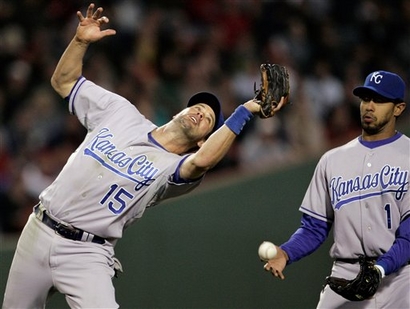Celebrate the Final Season at Yankee Stadium™ with a collection of the most unforgettable games ever played at the “House that Ruth Built”
THE NEW YORK YANKEES®:
ESSENTIAL GAMES OF YANKEE STADIUM
Packaged in Collectible Steel Book™ Casing, This Must-Have Piece of Bronx Bomber History ($59.95 suggested retail price) Features 6 Full Game Broadcasts from ‘76 to ‘03 including: Chambliss’ Walk-off Homer in ALCS Game 5, Mr. October’s 3 HR Game in the ’77 Series and the 2003 ALCS Game 7 vs. the Sox, Plus Hours of Bonus Programming, Uncut Interviews and Rare Game Footage!
IN STORES SEPTEMBER 23
NEW YORK, NY – On September 21, 2008 the last regular season game will be played at Yankee Stadium, as the newly built home of the Bronx Bombers continues to be raised in the distance. The grandest stage for baseball stars, history, lore, and countless achievements, Yankee Stadium -- from its heavenly white façade to its rich hues of blue -- possesses a regal magic and aura that, to fans of the team and baseball die-hards, can’t be overlooked. Here, the grass shimmers with a brighter green, the flag flies prouder, and the full-throated fans cheer louder there than anywhere else. Two days following the last home stand at the stadium the Bombers have called home since 1923, A&E Home Video and Major League Baseball Productions proudly presents THE NEW YORK YANKEES®: ESSENTIAL GAMES OF YANKEE STADIUM.
This superlative six-DVD set, priced to add to every baseball fan’s home entertainment library at $59.95, showcases six television broadcasts of games that shaped the mystique of this fabled baseball cathedral. Selected entirely by Yankees.com readers, these outstanding games each mark glorious chapters in the history of the winningest franchise in any sport. Covering four decades, dozens of legends, and millions of memories, this set -- celebrating everything that is quintessentially Yankees® and 100% baseball -- digitally preserves magic moments from Yankee Stadium, the greatest stage in sports. Also included are hours of bonus features and highlights including Ron Guidry’s 18k game in ’78, Bobby Murcer’s walk-off homer following Thurman Munson’s tragic plane crash, highlights from the 2001 Subway Series and much more.
The legendary games featured, uncut and commercial-free, on THE NEW YORK YANKEES®: ESSENTIAL GAMES OF YANKEE STADIUM, include:
1976 ALCS™ Game 5 vs. Kansas City Royals® -- Chris Chambliss’ walk-off home run sends the Yankees to their first World Series® since 1964.
1977 World Series® Game 6 vs. Los Angeles Dodgers® -- Reggie Jackson’s historic three-home-run-game propels the Bronx Bombers™ to another World Series Championship.
1995 ALDS™ Game 2 vs. Seattle Mariners® -- This 15-inning drama ended with Jim Leyritz’ walk-off home run and featured home runs from Don Mattingly, Paul O’Neill and Ruben Sierra. With 3.1 innings in relief by a young Mariano Rivera, who notched the win.
1996 World Series Game 6 vs. Atlanta Braves® -- After New York lost the first two games of the 1996 World Series, they won the next four and finished with a Game 6 celebration that shook Yankee Stadium with delight.
2001 World Series Game 4 vs. Arizona Diamondbacks® -- History unfolded when Tino Martinez hit a 2-out, bottom of the 9th, two-run homer to tie the game. Then in the 10th, “Mr. November” Derek Jeter’s game-winning home run ended another remarkable victory.
2003 ALCS Game 7 vs. Boston Red Sox® -- With a World Series appearance at stake, aces on the mound, and a white knuckles everywhere, Aaron Boone stroked the game-winning home run to seal the Yankees 11-inning victory.
This September, don’t mourn the passing of this hallowed venue. Instead, join the roaring crowds that shook Yankee Stadium’s rafters for over eight decades to celebrate its resonant history with THE NEW YORK YANKEES®: ESSENTIAL GAMES OF YANKEE STADIUM.
DVD Features:
■ Chris Chambliss on his 1976 ALCS™ Game 5 home run
■ June 17, 1978 Ron Guidry 18 Ks
■ August 6, 1979 first game after Thurman Munson died, Bobby Murcer hits the game-winner
■ 1996 ALCS Game 1 hometown fans aid Derek Jeter’s home run
■ 1999 ALCS Game 1 Bernie Williams’ walk-off home run beats Boston
■ 2000 World Series® Game 1 first Subway Series™ since 1956
■ 2001 World Series Game 5 Scott Brosius repeats the impossible, Alfonso Soriano wins it
■ July 1, 2004 “The Dive” by Derek Jeter
A&E Home Video, part of the Consumer Products Division of A&E Television Networks (AETN), is a video distributor of non-theatrical programming, featuring collectible DVD editions of the high quality programming from A&E Network and History™, as well as acquired classic programming. A&E Home Video brings the best of critically acclaimed entertainment presented in award-winning packaging to the special interest category. For more information about ordering these and other titles from the A&E Home Video Collection, call (212) 206-8600 (TRADE ONLY). Consumers please call 1-800-423-1212 (A&E). In addition to placing orders by phone, A&E Home Video products may be purchased over the World Wide Web at ShopAETV.com.
Major League Baseball Productions is the Emmy® award-winning television and video production division of Major League Baseball. With unparalleled access to the game and its players, Major League Baseball Productions produces original programming for growing audiences worldwide through its network specials, exclusive home videos, commercials and other specialty programming.



















